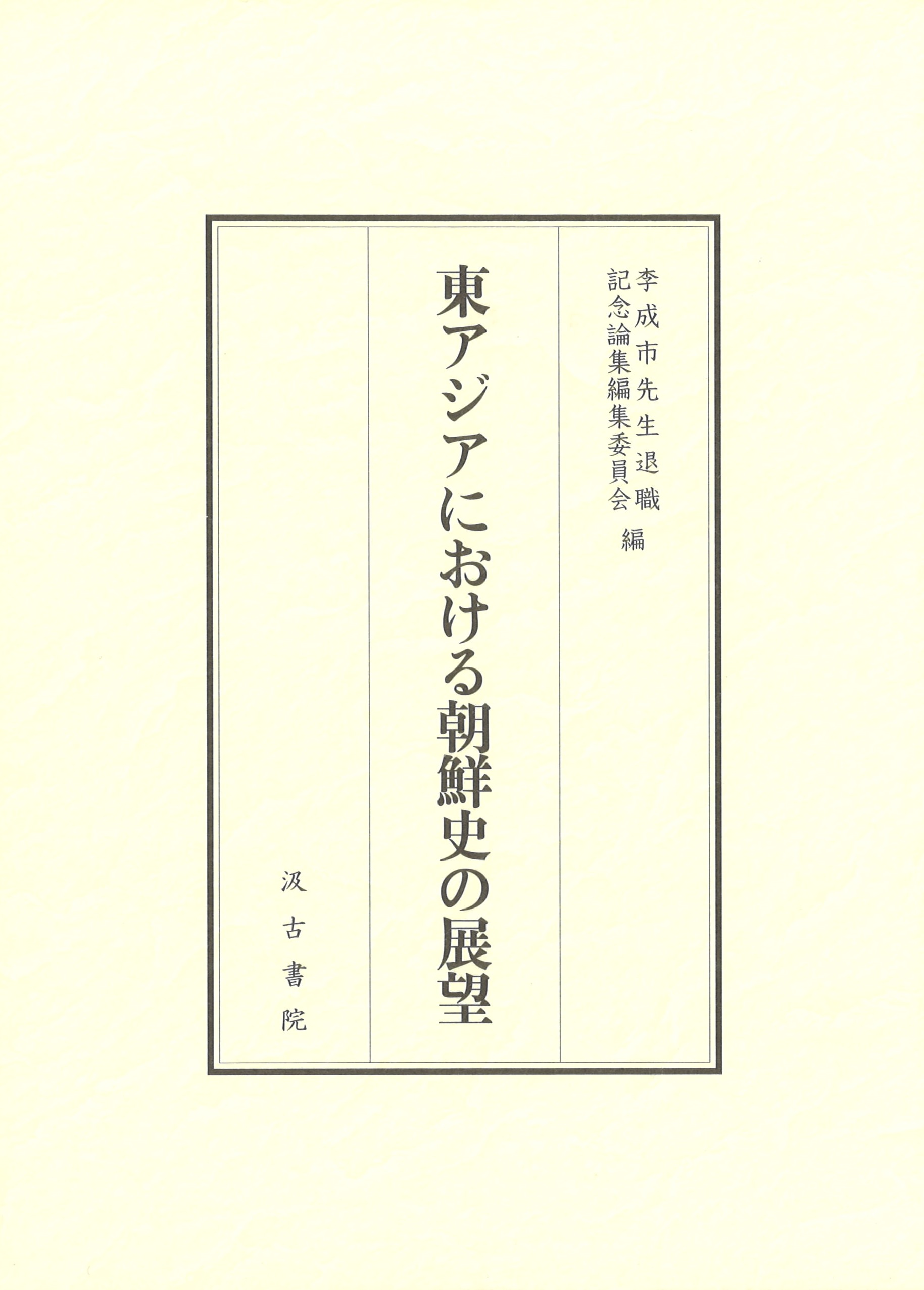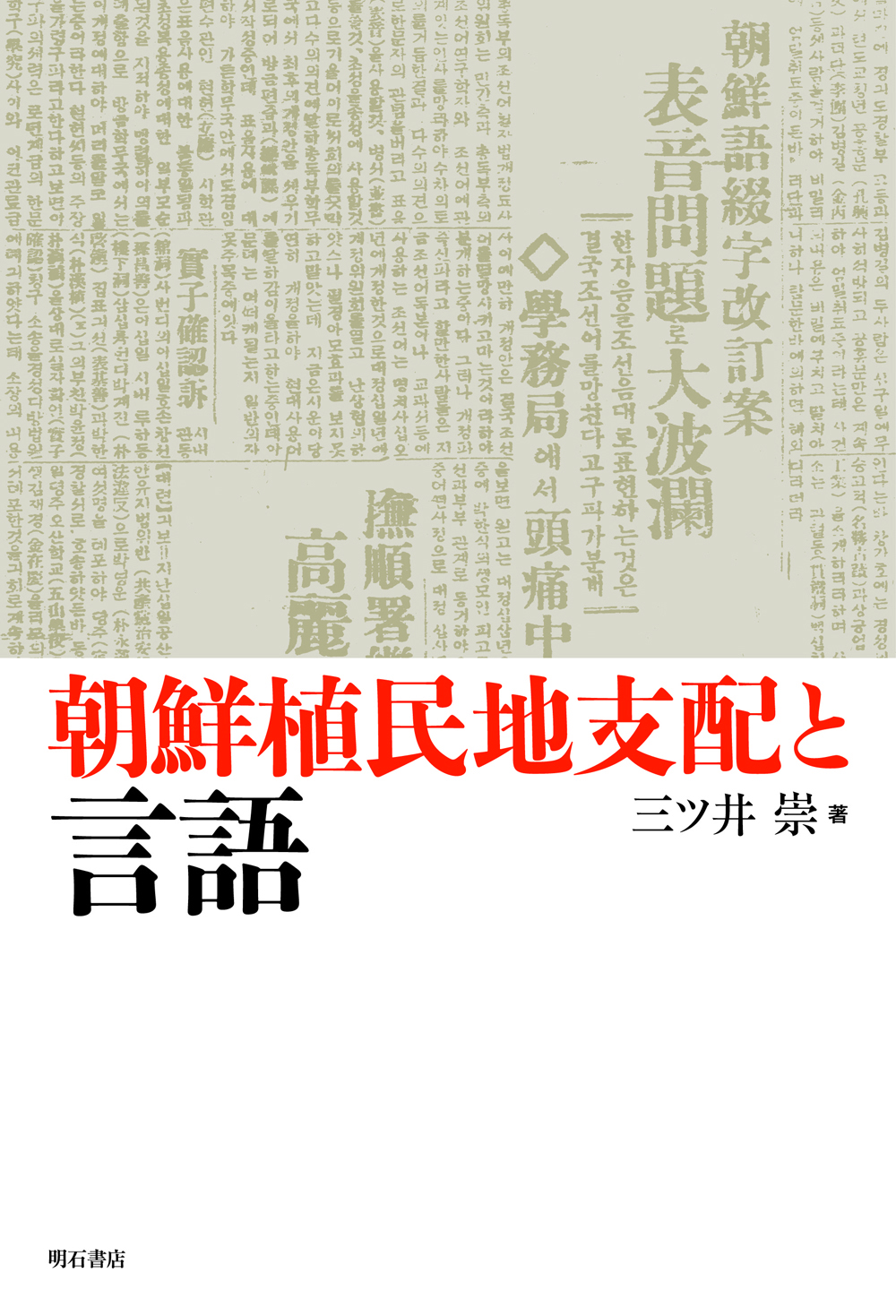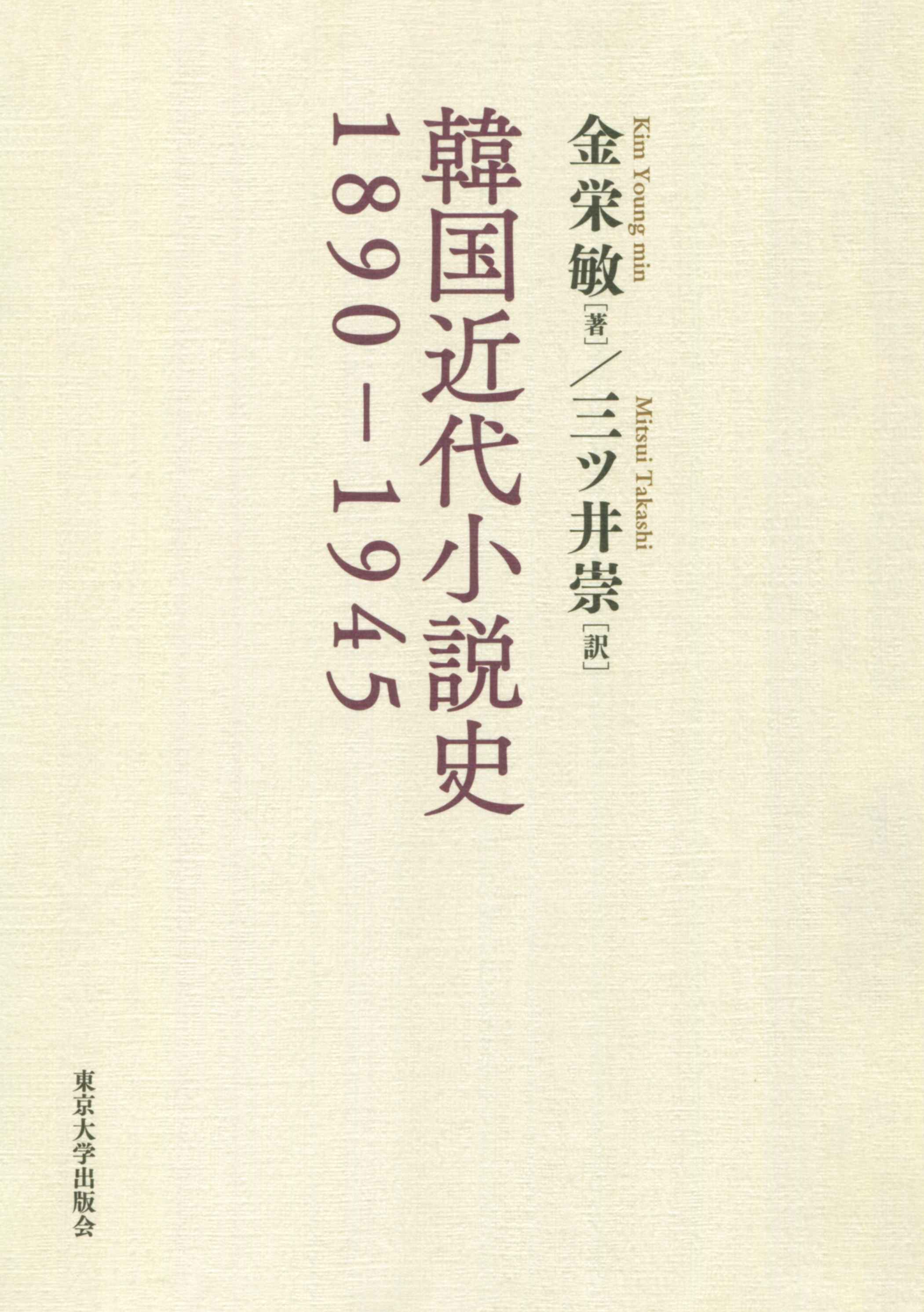
Title
Higashi-Asia ni okeru Chosen-shi no Tenbo (An Overview of Korean History in East Asia)
Size
432 pages, A5 format
Language
Japanese
Released
March 03, 2023
ISBN
978-4-7629-9575-0
Published by
Kyuko Shoin
Book Info
Misc.
*Out of Stock
Japanese Page
This book is a collection of essays commemorating the retirement of Lee Sung-si, who retired from Waseda University in March 2023. An editorial committee made up of Ueda Kiheinarichika, Sawamoto Mitsuhiro, Hashimoto Shigeru, and Mitsui Takashi took the lead in its compilation, and it brings together essays by eleven contributors who studied either directly or indirectly under Lee and an essay by Lee himself, making twelve essays in total. The book is broadly divided into two parts, “The History of Historical Research and Theories about History” and “The History of the Ancient Period,” and it brings together studies covering a wide range of topics, from ancient history to perceptions of history in the present day.
Mitsui contributed an essay titled “The Misread Logic for the Resolution of Discrimination: Kita Sadakichi’s Hypothesis of the Common Ancestry of Japan and Korea and a Reconsideration of His Perceptions of Korea,” included in Part 1. It discusses the character of the hypothesis that Japan and Korea are of common ancestry, propounded by the modern Japanese historian, Kita Sadakichi (1871–1939).
The hypothesis that Japan and Korea are of common ancestry is a form of historical discourse prevalent in modern Japan that argued for the ethnic (or racial or linguistic) unity of Japan and the Korean peninsula since before the dawn of history, and Kita is well known as one of its main advocates. This hypothesis functioned to justify Japan’s annexation of Korea in 1910 and its subsequent colonial rule of Korea, and in the history of historical research since the end of the war in 1945 it has been criticized as a classic example of “colonial historiography.” While maintaining a critical view of these political functions of this hypothesis, the above essay endeavours to review and reposition Kita’s views from an awareness that past criticism of this hypothesis or of Kita may have failed to carefully follow the logic of Kita, who tackled a great variety of research topics.
First, in this essay Kita’s discourse on this hypothesis is divided into two periods: (1) around the time of the annexation of Korea and (2) after the March 1st movement (1919). With regard to (1), it is shown that, rather than meticulously presenting corroborative materials and so on, Kita made great use of rhetoric and emphasized the “hybrid” nature of the “Japanese people” with the aim of justifying the annexation of Korea. With regard to (2), it is shown that the framework of the hypothesis that Japan and Korea are of common ancestry was developed with an awareness of the structure of discrimination that was exposed in the March 1st movement and the dissatisfaction of the Korean people with this state of affairs.
Next, especially during and after the March 1st movement, Kita was compelled to recognize the existence of discrimination against Koreans. The essay draws attention to the fact that Kita stubbornly emphasized that the hypothesis of the common ancestry of Japan and Korea could provide the logic for resolving this discrimination, and it examines the background to Kita’s stance. Specifically, attention is drawn to Kita’s understanding of the question of discriminated communities in Japan, in which he was involved. Kita interpreted in historical terms the inhabitants of discriminated communities, who had been discriminated against as a different race, and demonstrating that their existence was unrelated to race, he sought to overcome discrimination against them by integrating and embracing them in the “empire” as members of the same Japanese “people.” Kita’s hypothesis about the common ancestry of Japan and Korea was developed with the conviction that the integration and embracing of Koreans as members of the same “people” by means of the same logic would lead to the resolution of discrimination against them. But this logic was incompatible with Korean nationalism, which wanted independence from Japanese rule. This essay concludes that Kita applied to Koreans the same logic that he had proposed for resolving discrimination against discriminated communities in Japan and misread the logic for resolving discrimination against Koreans.
(Written by MITSUI Takashi, Professor, Graduate School of Arts and Sciences / 2023)



 Find a book
Find a book







